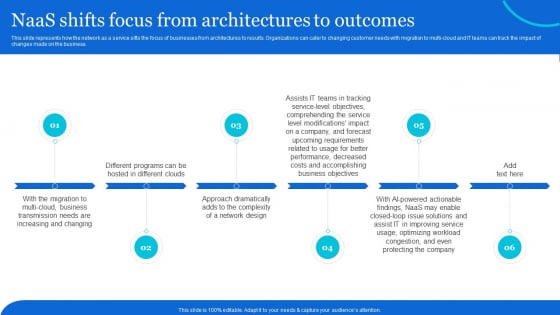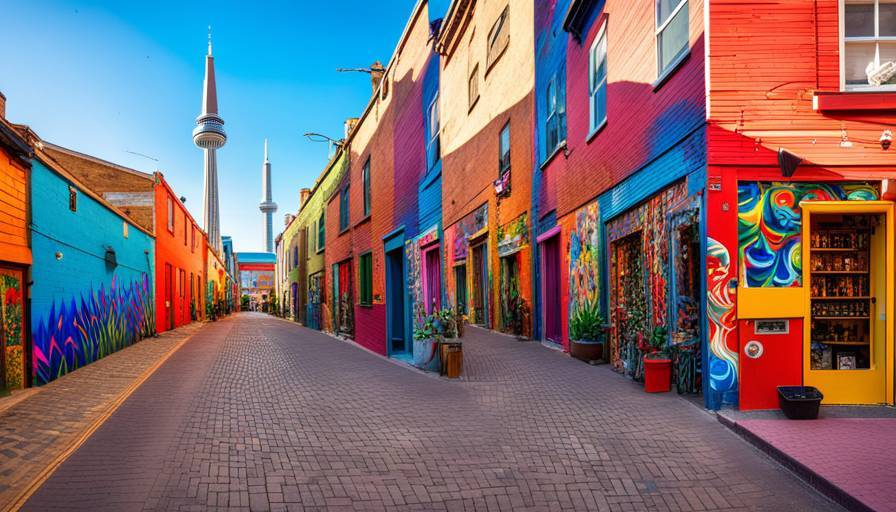

From Gabled Charm to Green Skylines: 3 Architectural Shifts Defining Toronto’s Next Decade
Toronto, a city sculpted by history and aspiring to the future, stands at a fascinating architectural crossroads. For over a century, its skyline has been punctuated by the elegant, ornate details of its Victorian past. These structures, with their steeply pitched gables, intricate gingerbread trim, and stately bay windows, whisper tales of a bygone era of industrial might and burgeoning urbanity, echoing the very spirit of Queen Victoria’s transformative reign (1837-1901) which shaped global aesthetics and societal norms.
Yet, as the city hurtles into the next decade, its architectural narrative is rapidly evolving. The solid, often romantic, foundations of the Victorian era are being challenged and complemented by bold new visions. These aren’t just aesthetic changes; they reflect seismic shifts in our understanding of urban living, sustainability, and community. We’re witnessing a profound transformation, moving from the romanticism of the past to the pragmatic ingenuity of the future. Let’s delve into the three key architectural shifts that are shaping Toronto’s next decade, painting a vibrant new picture of this dynamic metropolis.
Shift 1: The Rise of Biophilic Design – Nature Reclaims the Concrete Jungle
The Victorian Legacy: Earth-Bound Elegance
Victorian architecture, while beautiful, was largely an embrace of the man-made. Gardens were meticulously planned, often contained within private property lines. The connection to nature was present, but curated, a backdrop rather than an integrated element of daily life. Think of the stately homes with their manicured lawns and pocket gardens, beautiful but distinctly separate from the urban fabric.
The Future Vision: Living Buildings and Vertical Forests
The next decade in Toronto will be defined by an unprecedented integration of nature into the built environment. Biophilic design, the practice of connecting building occupants more closely to nature, is no longer a niche concept; it’s becoming a necessity. We’re moving beyond simple potted plants on balconies.
Imagine buildings that breathe. Towering structures adorned with cascading greenery, creating vertical forests that actively purify the air, mitigate the urban heat island effect, and foster biodiversity. This isn’t just about aesthetics; it’s about creating healthier, more resilient urban ecosystems. Think of the innovative designs seen in Milan and Singapore, now arriving on Toronto’s shores.
This shift will manifest in:
- Green Roofs and Walls: Not just decorative, but functional, managing stormwater, improving insulation, and providing urban habitat.
- Integrated Green Spaces: Parks and gardens woven into the very fabric of high-rise developments, creating accessible natural havens for residents.
- Natural Materials and Light: Prioritizing wood, stone, and maximizing natural light penetration to enhance well-being.
Key Features of Biophilic Design:
| Feature | Victorian Era Influence | Future Toronto Vision |
|---|---|---|
| Greenery | Contained, manicured gardens | Integrated, living facades, vertical forests |
| Materials | Brick, stone, wood (structural) | Natural wood, living materials, recycled composites |
| Air Quality | Internal ventilation, less focus on outdoor air | Active air purification through living systems |
| Urban Heat Island | Contributed to through dense construction | Mitigated by extensive green surfaces and shading |
| Resident Well-being | Secondary to grandeur | Primary focus through connection to natural elements |
Shift 2: The Modular Revolution – Precision, Speed, and Adaptability
The Victorian Legacy: Craftsmanship and Longevity
Victorian construction was characterized by a deep respect for craftsmanship and the belief in building structures that would stand for generations. While this resulted in enduring beauty, it also meant lengthy construction times and a less adaptable building stock. Customization was king, but at a significant cost in time and resources.
The Future Vision: Prefabricated Precision and Fluidity
The next decade will see Toronto embrace the modular and prefabricated construction revolution. This isn’t about cheap, cookie-cutter housing; it’s about precision engineering, reduced waste, and significantly faster build times. Think of building components crafted off-site in controlled factory environments, then assembled on-site with remarkable speed and accuracy.
This approach allows for greater flexibility and adaptability. Buildings can be designed for disassembly and reconfiguration, catering to changing urban needs and demographic shifts. It’s a move towards a more responsive and sustainable construction lifecycle.
This shift will lead to:
- Faster Project Delivery: Significantly reducing construction timelines, a crucial advantage in a growing city.
- Reduced Waste: Factory-controlled environments minimize material waste.
- Higher Quality Control: Consistent precision in manufacturing leads to a more durable and well-built product.
- Adaptable Spaces: Buildings designed to be easily reconfigured or expanded as needs change.
Modular Construction: A Paradigm Shift
| Aspect | Victorian Construction | Future Toronto Modular Construction |
|---|---|---|
| Production | On-site, labor-intensive, weather-dependent | Off-site, factory-controlled, efficient, weather-independent |
| Speed | Slow, iterative | Rapid assembly, significantly reduced timelines |
| Waste | Higher, less controlled | Lower, optimized material usage |
| Adaptability | Limited, costly modifications | High, designed for reconfiguration and disassembly |
| Cost Efficiency | High labor costs, longer build times | Potential for cost savings through efficiency and scale |
Shift 3: The Smart and Sustainable Core – Integrated Technologies for an Efficient Tomorrow
The Victorian Legacy: Foundational Infrastructure, Limited Integration
Victorian-era infrastructure laid the groundwork for modern cities – think early sanitation systems and gas lighting. However, technology was largely external, powering devices rather than being intrinsically woven into the building’s very DNA. Homes were heated by individual furnaces; energy management was manual.
The Future Vision: Intelligent Ecosystems and Net-Zero Ambitions
Toronto’s next decade will be defined by the ubiquitous integration of smart technologies and a fervent pursuit of sustainability. Buildings will evolve from static structures into intelligent, responsive ecosystems. This means buildings that actively manage their energy consumption, optimize occupant comfort, and contribute positively to the surrounding environment.
We’re talking about:
- Smart Grid Integration: Buildings that can communicate with the power grid, adjusting their energy use to optimize demand and supply, and potentially feeding excess renewable energy back into the grid.
- AI-Powered Building Management: Systems that learn occupant patterns to optimize heating, cooling, and lighting, dramatically reducing energy waste.
- Advanced Material Science: Utilizing self-healing concrete, energy-generating windows, and other innovations that push the boundaries of building performance.
- Net-Zero and Carbon-Positive Goals: A commitment to designing and constructing buildings that produce as much energy as they consume, or even more.
Technological Integration: A Leap Forward
| Technology | Victorian Era Application | Future Toronto Smart Building Application |
|---|---|---|
| Energy Management | Manual control of heating and lighting | AI-driven optimization, smart grid interaction, IoT sensors |
| HVAC | Individual furnaces, basic ventilation | Geothermal systems, radiant heating/cooling, demand-controlled ventilation |
| Connectivity | Telegraph, early telephone lines | Ubiquitous Wi-Fi, integrated data networks, smart home controls |
| Material Science | Brick, stone, steel (emerging) | Self-healing materials, phase-change materials, kinetic energy harvesting |
| Environmental Goal | Focus on basic sanitation and structural integrity | Net-zero energy, carbon neutrality, waste reduction, water conservation |
The Evolving Toronto Skyline: A Tapestry of Time and Innovation
Toronto’s architectural journey from its Victorian roots to its future aspirations is a testament to its dynamism and resilience. The gabled charm and solid craftsmanship of the past have provided a rich foundation, but the city is now confidently striding into an era of ecological consciousness, technological advancement, and adaptable living.
The next decade promises a Toronto that is not only visually stunning but also deeply functional, sustainable, and responsive to the needs of its citizens and the planet. As these three architectural shifts converge, they will undoubtedly redefine what it means to live, work, and thrive in this vibrant Canadian metropolis. The conversation has begun, and the blueprint for Toronto’s future is being drawn, one sustainable, intelligent, and nature-infused building at a time.
Additional Information
From Victorian Charm to Future Living: 3 Architectural Shifts Defining Toronto’s Next Decade
Toronto, a city celebrated for its rich history and vibrant modernity, stands at a fascinating architectural crossroads. While its streets still echo with the charm of the Victorian era – a period roughly spanning from 1837 to 1901, marked by Queen Victoria’s reign and characterized by significant industrialization, urbanization, and empire-building in Britain and its sphere of influence – the city is rapidly evolving. As we look towards the next decade, three distinct architectural shifts are poised to redefine Toronto’s urban landscape, moving beyond its historical foundations towards a more sustainable, adaptable, and community-focused future.
1. The Vertical Embrace: Beyond the Traditional High-Rise
Toronto’s skyline has long been characterized by its impressive collection of modern high-rise buildings. However, the next decade will witness a significant evolution in this vertical growth, moving beyond mere height and embracing a more nuanced approach to density.
Analysis: While the foundational concept of building upwards is not new, the nature of these vertical structures is changing. We are moving away from the monolithic, often glass-and-steel towers of the late 20th and early 21st centuries towards more integrated and responsive designs. This includes:
- Mixed-Use Integration: The trend is towards buildings that seamlessly blend residential, commercial, and recreational spaces within a single structure or a closely knit complex. This fosters walkability and reduces reliance on transportation, a stark contrast to the more segregated zoning of earlier urban development.
- “Staircase” Massing and Terraced Design: To mitigate the overwhelming scale of traditional towers and improve sunlight penetration and wind flow, architects are increasingly employing “staircase” massing, where upper floors are set back, creating opportunities for accessible outdoor terraces and green spaces. This offers a more human scale to high-density living, a significant departure from the imposing nature of some older high-rises.
- Sustainable Construction and Materials: Expect a greater emphasis on sustainable building materials, passive design strategies (e.g., optimizing natural light and ventilation), and the integration of green technologies like solar panels and advanced insulation. This is a direct response to the growing awareness of climate change, a concern far removed from the industrial-driven expansion of the Victorian era.
- Adaptable and Modular Construction: The future will see more emphasis on flexible floor plans and modular construction techniques, allowing buildings to adapt to changing needs and demographics over time. This foresight contrasts with the more permanent, less adaptable structures of the past, including the grand, but often inflexible, Victorian homes and commercial buildings that still grace many Toronto neighborhoods.
Connection to Victorian Era: While the Victorian era saw significant urbanization and the rise of multi-story buildings for factories and residences, it was primarily driven by industrial expansion and a more hierarchical approach to urban planning. The “vertical embrace” of Toronto’s next decade, conversely, prioritizes livability, sustainability, and community integration within its high-density developments, reflecting a different set of societal priorities.
2. The Bio-Integrated City: Greenery Reclaiming the Concrete Jungle
The image of a bustling, industrial city – a hallmark of the Victorian era’s progress – is being challenged by a new vision: the bio-integrated city. Toronto is increasingly embracing architectural approaches that weave nature back into the urban fabric, transforming buildings and public spaces into living ecosystems.
Analysis: This shift is driven by a desire to improve environmental quality, enhance resident well-being, and create more resilient urban environments. Key aspects include:
- Vertical and Rooftop Gardens: Beyond aesthetic appeal, these green spaces are being integrated for functional purposes, such as stormwater management, urban heat island mitigation, and even urban agriculture. This is a direct reimagining of how built environments interact with natural systems, a concept virtually absent during the smoke-filled skies of the Victorian industrial revolution.
- Biophilic Design Principles: Architects are incorporating biophilic design, which seeks to connect building occupants more closely to nature. This can manifest in the use of natural materials, organic shapes, abundant natural light, and views of greenery, all aimed at improving mental and physical health.
- Green Infrastructure Integration: Buildings will increasingly feature green roofs, living walls, and permeable paving systems that mimic natural hydrological processes. This is about creating a more symbiotic relationship between the built and natural worlds, moving away from the hard infrastructure focus of earlier eras.
- Adaptive Reuse of Existing Structures: The preservation and reimagining of older buildings, including many from the Victorian era, as part of this green transformation is also a significant trend. Instead of demolishing, architects are finding innovative ways to infuse historic structures with modern green technologies and new uses, honoring their past while embracing a sustainable future.
Connection to Victorian Era: The Victorian era in Toronto, like elsewhere, was characterized by rapid industrialization and a largely utilitarian approach to urban development. Green spaces were often considered secondary or exclusive to the wealthy. The bio-integrated city represents a radical departure, prioritizing ecological health and human well-being as integral components of urban design, directly addressing the environmental consequences of unchecked industrial growth that defined the Victorian period.
3. The Community Hub: Designing for Connection and Inclusivity
The isolated, purely functional building is giving way to a more socially conscious approach to architecture, where design actively fosters community interaction and inclusivity. Toronto’s next decade will see a heightened focus on creating “community hubs” that serve diverse populations.
Analysis: This evolution reflects a growing understanding of the social determinants of health and the importance of strong community ties in urban living. Architectural strategies include:
- Flexible and Adaptable Public/Semi-Public Spaces: Buildings are being designed with adaptable ground floors and shared amenity spaces that can be programmed for a variety of community events, workshops, and gatherings. This moves beyond purely private residential or commercial use, creating nodes of social activity.
- Emphasis on Shared Amenities and Co-Living/Co-Working: The rise of co-living and co-working spaces exemplifies this trend, offering shared facilities and fostering intentional communities. This concept of shared resources and collaborative living is a far cry from the more individualistic and class-stratified housing models prevalent in the Victorian era.
- Accessible and Universally Designed Spaces: Architects are prioritizing universal design principles to ensure that buildings and public spaces are accessible to people of all ages and abilities. This commitment to inclusivity is a significant advancement from the often less accessible and more rigid designs of past eras.
- Integration of Arts, Culture, and Local Identity: New developments are increasingly incorporating public art, cultural spaces, and design elements that reflect the diverse heritage of Toronto’s neighborhoods. This aims to create a sense of place and belonging, moving beyond generic architectural solutions.
Connection to Victorian Era: The Victorian era, while a time of immense social change and the growth of new urban centers, also saw significant social stratification and often distinct enclaves based on class and background. Public spaces existed, but their design and accessibility were often influenced by these social divisions. The “community hub” model of Toronto’s next decade actively seeks to break down these barriers, promoting social cohesion and a sense of shared identity through thoughtfully designed, inclusive environments.
In conclusion, Toronto’s architectural journey is one of continuous transformation. From the imposing, yet often ornate, structures that hint at the city’s Victorian past, we are witnessing a deliberate shift towards a future where buildings are not just shelters, but dynamic, sustainable, and socially responsible elements of a thriving urban ecosystem. The next decade promises a city that is greener, more connected, and more attuned to the evolving needs of its diverse inhabitants, building upon its historical foundations while boldly stepping into a new era of urban living.











:max_bytes(150000):strip_icc()/SydneyHarbourBridge_4-669da55625bf4825bea7a270e96c6a53.jpg)
